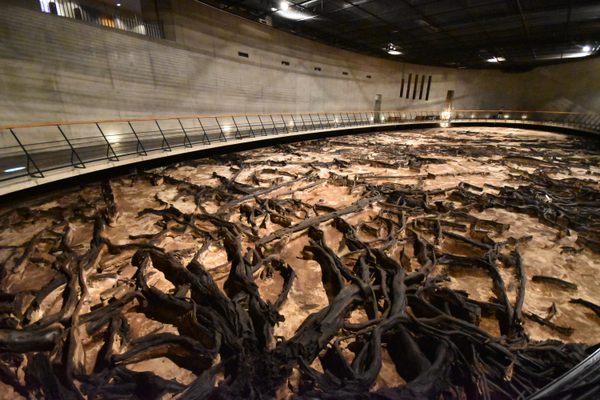In 1987-1988, an archaeological dig was undertaken at the Tomizawa site in Sendai as a preliminary inspection for the construction of an elementary school. It had been long known as the site of a prehistoric settlement, but no one expected to find what was buried underneath: a fossilized 20,000-year-old forest.
In favor of this unique archaeological site like no other, the construction project was immediately dropped and moved elsewhere. In 1996, the Sendai City Tomizawa Site Museum—commonly known as the Underground Forest Museum—was founded to protect the site. Preserved in situ, the forest is made up of spruce trees of a previously unknown species and takes up about 800 square meters of the subterranean space.
Among the fossilized forest, you can also find the remains of a campfire as well as deer dung and such. Unearthed artifacts such as arrowheads and stoneware are exhibited on the upper floor, and visitors are encouraged to touch one of the tree roots found at the site. Outside the museum is a recreation of an Ice Age forest, consisting of colder-climate trees similar to the Tomizawa spruce.
The Tomizawa site is said to be the only place in the world where such an old fossilized forest was found alongside human settlement remains spanning centuries, from the Neolithic period to the Middle Ages and beyond.

